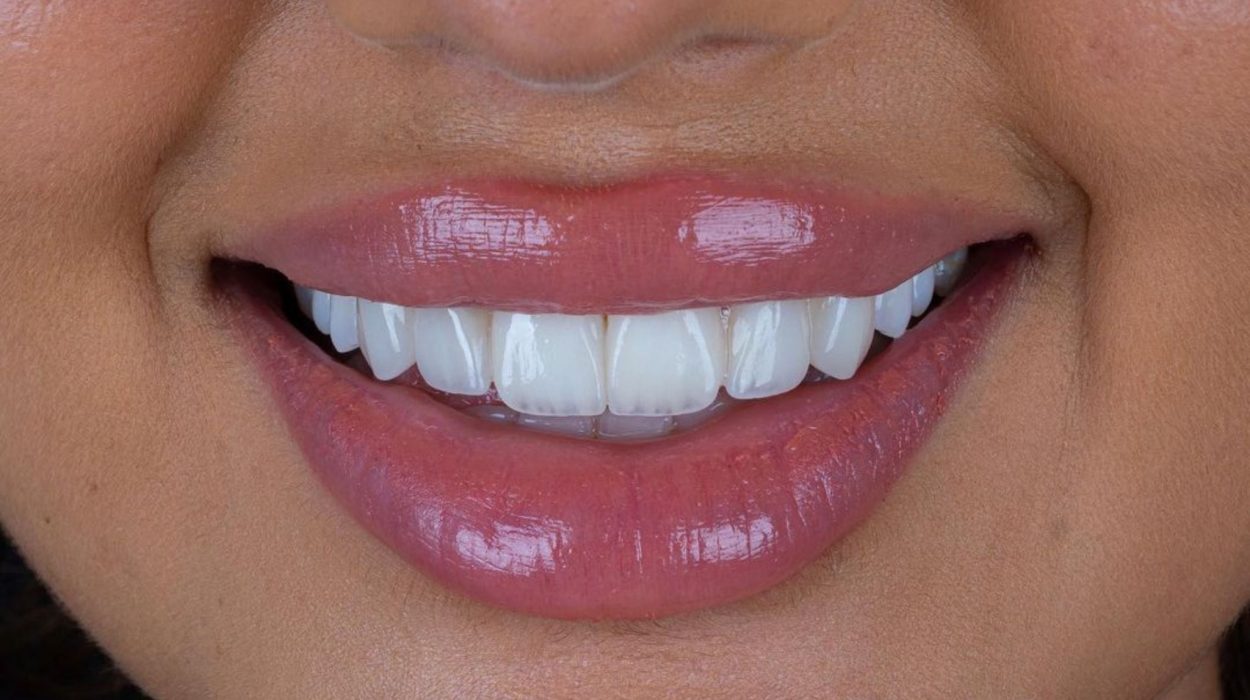Laser skin resurfacing is usually the treatment of choice for people who are concerned with signs of ageing or those looking to rejuvenate their skin. These devices come in different types, and in the hands of a skilled dermatologist and cosmetic surgeon, lasers can help treat a wide range of skin concerns, such as fine lines, loss of skin tone, belly fat and more.
Two of the most commonly used lasers for skin are ablative and non-ablative lasers. Each laser type has its unique benefits, suitable applications, and considerations that help dermatologists determine the best option for you.
Before you undergo laser resurfacing, it is imperative and highly advisable to learn and understand more about how it works and the differences between ablative and non-ablative lasers.
What are Ablative Lasers?
Ablative lasers use intense wavelengths of light to destroy the epidermis (the outermost layer of the skin) and heat the dermis (the underlying skin). This energy beam helps stimulate new collagen fibres to grow, leading to skin tightening and texture improvement. As the wound heals and the skin regrows, the treated area shows increased firmness and improved texture. These lasers also remove any damaged tissue on the surface, revealing fresh skin underneath.
Commonly used ablative lasers are the Co2, Erbium YAG lasers or combination systems. At Hortman Clinics, we use Erbium YAG lasers for skin treatments. Ablative lasers are more invasive than non-ablative ones but help achieve dramatic improvements after just one session. However, you may require a downtime of a few weeks following skin treatment with ablative lasers.
Ablative lasers are effective in treating:
- Deep wrinkles
- Scars of all types, including acne scars
- Sun damage
- Age spots
- Photoaging
- Warts
- Moles and other nevi
- Skin tags
- Neurofibroma
- Angiofibroma
- Keloids
Ablative laser procedure
Here’s what you can expect during an ablative laser procedure:
- Adequate antiviral and antibacterial prophylaxis is given to high-risk patients.
- Protective gear, including eye protection, is provided to the patient and worn by the healthcare professional.
- The target area is cleansed using a non-alcoholic cleanser like a povidone-iodine 5% solution. Alcohol-containing antiseptics are inflammable and must, therefore, be avoided.
- Anaesthesia is given to ensure the procedure is comfortable for the patient.
- The laser device is moved over the target areas. A typical ablative laser skin resurfacing involves sequential treatment of different parts of the skin.
Immediate oedema, crusting, oozing and pinpoint bleeding are common results right after the ablative laser procedure. However, these resolve in a few minutes to hours.
How do Ablative Lasers work?
Ablative lasers are based on selective thermolysis, meaning the intense wavelength of light in this laser treatment removes only the targeted epidermis and superficial dermis layers.
- The energy given out by the laser beam is absorbed by the pigments in the epidermis, such as melanin, and destroys them.
- This light also causes the vaporisation of dead and damaged skin cells, thereby removing them and encouraging the growth of new skin tissue.
- This process also stimulates collagen production and cell renewal, giving you radiant, smooth and younger-looking skin.
Contraindications of Ablative Lasers
Here are a few conditions where ablative laser resurfacing is not advised and is contraindicated:
- Scleroderma
- Cutaneous disorders like vitiligo, lichen planus and psoriasis
- Ongoing UV light exposure
- Fitzpatrick skin types IV-VI
- Recent chemical peel treatment
- Recent isotretinoin treatment
Pros and Cons of Ablative Lasers
- The results are often dramatic
- Only one or a few sessions will provide a noticeable improvement in skin texture and appearance.
- The procedure requires more downtime compared to non-ablative lasers.
- Side effects like redness, swelling, and scabbing may occur post-treatment
- Healing can take several weeks
- There is a higher risk of complications, such as hyperpigmentation or infection.

What are Non-Ablative Lasers?
Non-ablative lasers are non-invasive in nature and, therefore, are also called non-wounding lasers. They deliver specific wavelengths that target the deeper skin layers without removing the outer layer. In doing so, they stimulate collagen production, promote skin regeneration, and improve skin appearance over time.
They are an excellent treatment choice for people who wish to improve their skin texture, skin tone, fine lines, mild wrinkles and pigmentation issues.
Since non-ablative lasers are gentle, they are ideal for those who do not want minor changes. For the same reason, one may require multiple sessions to get the desired effects. The downtime with these lasers is also a few days compared to several weeks with an ablative laser.
Uses of non-ablative lasers
Non-ablative lasers are used to treat:
- Fine lines
- Age spots
- Wrinkles
- Scars
- Photoaging
- Warts
- Moles and other nevi
- Skin tags
- Neurofibroma
- Angiofibroma
- Keloids
There are different types of non-ablative lasers, the two most commonly used ones being:
ClearSilk laser is a gentle laser used to treat pigmentation, mild wrinkles and fine lines.
Nd: YAG laser is commonly indicated for pigmentation, mild acne scars, and improved overall skin texture. It may be used for hair removal and vascular lesions.
How do Non-Ablative Lasers work?
Non-ablative layers differ from ablative lasers in that they target the deeper, inner layers of the skin without damaging the surface.
- The low-intensity wavelength of light reaches the deeper skin layers and encourages collagen production.
- The heat generated by the non-ablative lasers stimulates collagen production in the skin, causing it to tighten and become firm.
- Because of this, non-ablative lasers produce fewer side effects.
Most non-ablative lasers are fractionated, which means they deliver heat into the skin through several tiny columns called microthermal treatment zones. This fractional approach enables faster skin healing in contrast to if the entire area was treated, reducing recovery time and the number of possible complications.
What happens during non-ablative laser procedures?
- The treatment/target area is cleansed
- The laser head is passed over the treatment area in horizontal and vertical passes.
- In most cases, the doctor applies a topical anaesthetic beforehand to ensure the patient is comfortable during the procedure. However, many patients experience a mild pricking sensation during the process.
- Skin treatment with a non-ablative laser typically takes 25 minutes.
What happens during non-ablative laser procedures?
- Most people can return to work right after a non-ablative laser procedure.
- Redness may occur following the laser procedure, but it will resolve on its own in a few days.
- A cold compress can be applied in the case of pain.
- Avoid sun exposure during treatment and healing phases. Always use a high-SPF sunscreen, especially if you are going out.
Pros and cons of non-ablative lasers
Side-by-side comparison
To help you understand the difference between ablative and non-ablative lasers, here’s a quick comparison:
Ablative lasers are high-intensity treatments, whereas non-ablative lasers are low to moderate.
Skin Concerns Treated: Ablative la
Ablative lasers are suitable for treating deep wrinkles, scars, significant sun damage, and age spots. Non-ablative lasers, on the other hand, are effective for treating fine lines, pigmentation, and mild scars.
Since ablative lasers are more invasive, you may require a downtime of a few days to a few weeks, depending on the type of laser used. Non-ablative lasers, being minimally invasive, require just a few days of downtime to help you recover
Ablative lasers are not suitable and recommended for people with darker skin tones as these lasers may cause hyperpigmentation. Non-ablative lasers are suitable for all skin tones.
The cost of ablative laser treatment is higher than that of non-ablative lasers due to the intensity of therapy and the equipment used.
The results of ablative laser treatment are dramatic and longer-lasting, whereas those with a non-ablative laser are usually gradual (over a period of time) and may require multiple sessions.
Who should choose Ablative Lasers?
Ablative lasers may be used in people who:
- Have significant signs of facial ageing (loss of elasticity, deeper skin wrinkles)
- Have deep or pitted facial scars
- Wish to get long-lasting or permanent results
- Can take time off work to recover after the procedure
- Wish to get a dramatic skin resurfacing
- Are over the age of 40
- Are willing to invest in the recovery/downtime
Who should choose Non-Ablative Lasers?
Non-ablative lasers are recommended for individuals who:
- Wish to address fine lines, mild acne scars and pigmentation
- Have mild to moderate signs of ageing
- Are younger than 60
- Are open to undergoing multiple sessions
- Are looking for treatments with a shorter downtime
Can non-ablative lasers treat deep wrinkles?
?Non-ablative lasers are not very effective for deep wrinkles. They are better suited for mild to moderate wrinkles, fine lines and other skin concerns.
How long does recovery take for ablative lasers?
Recovery following ablative laser treatment can take several days to weeks, depending on the laser type and the extent of the treatment.
Are laser treatments safe for dark skin tones?
Ablative laser treatments are not recommended for people with darker skin tones, as they cause pigmentation. Non-ablative lasers are generally safer for people of all skin tones. Always consult with a professional to determine the best treatment for your skin type.
What kind of skin conditions can a non-ablative laser treat?
Non-ablative lasers effectively improve wrinkles, brown age spots, and minor scars. These lasers heat the skin without injuring it. As a result, the laser promotes collagen production, improving skin health, firmness, and tightening.
Who is not a candidate for a non-ablative laser procedure for the skin?
Non-ablative laser treatment is not suitable for people with chronic health conditions or have unrealistic expectations from the procedure.
Ablative vs. Non-Ablative Lasers: Which one is right for you?
Here’s a quick comparison of ablative vs. non-ablative lasers:
Ablative lasers target the upper or outermost skin layer, whereas non-ablative lasers target the deeper layers to boost collagen production.
Ablative lasers are high-intensity treatments, whereas non-ablative lasers are low to moderate.
Ablative lasers are suitable for treating deep wrinkles, scars, significant sun damage, and age spots. Non-ablative lasers, on the other hand, are effective for treating fine lines, pigmentation, and mild scars.
Since ablative lasers are more invasive, you may require a downtime of a few days to a few weeks, depending on the type of laser used. Since non-ablative lasers are minimally invasive, you will need just a few days of downtime to recover.
Ablative lasers are unsuitable and not recommended for people with darker skin tones, as they may cause hyperpigmentation. Non-ablative lasers, however, are suitable for all skin tones.
The cost of ablative laser treatment is usually higher than that of non-ablative lasers due to the intensity of therapy and the equipment used
The results of ablative laser treatment are dramatic and longer-lasting, whereas those with a non-ablative laser are usually gradual (over a period of time) and may require multiple sessions.
Combining Treatments
In several cases, dermatologists combine ablative and non-ablative laser treatment to offer patients a more comprehensive solution to their multiple skin concerns. For instance, they may begin with an ablative laser treatment to address deep wrinkles and scarring, but this may be followed by a non-ablative laser treatment for pigmentation and fine lines.
Your dermatologist will discuss with you if they plan to combine laser procedures during your consultation appointment. To know more, book an appointment today!
Conclusion
Ablative and non-ablative lasers are routinely used in cosmetic treatments. To choose between the two, your dermatologist will understand your concerns and evaluate your skin condition to determine the best solution for you. While ablative lasers offer dramatic and long-term results, non-ablative lasers are gentler and bring about gradual improvements with minimal downtime.
Always consult a certified dermatologist for your skin concerns and allow them to determine what is most suitable for you. Whether you’re looking for a quick fix or a more subtle, gradual approach, there’s a laser treatment that can help you achieve your desired skin goals.
To learn which laser treatment benefits you the most, schedule an appointment with our expert dermatologists at Hortman Clinics, one of the best cosmetic dermatology and laser clinics in Dubai
HORTMAN CLINICS NEWS
Related News
We are here for you. Always.
Everything we do is tailored to your needs, this is why we take our time to take care of you and answer all your questions.




